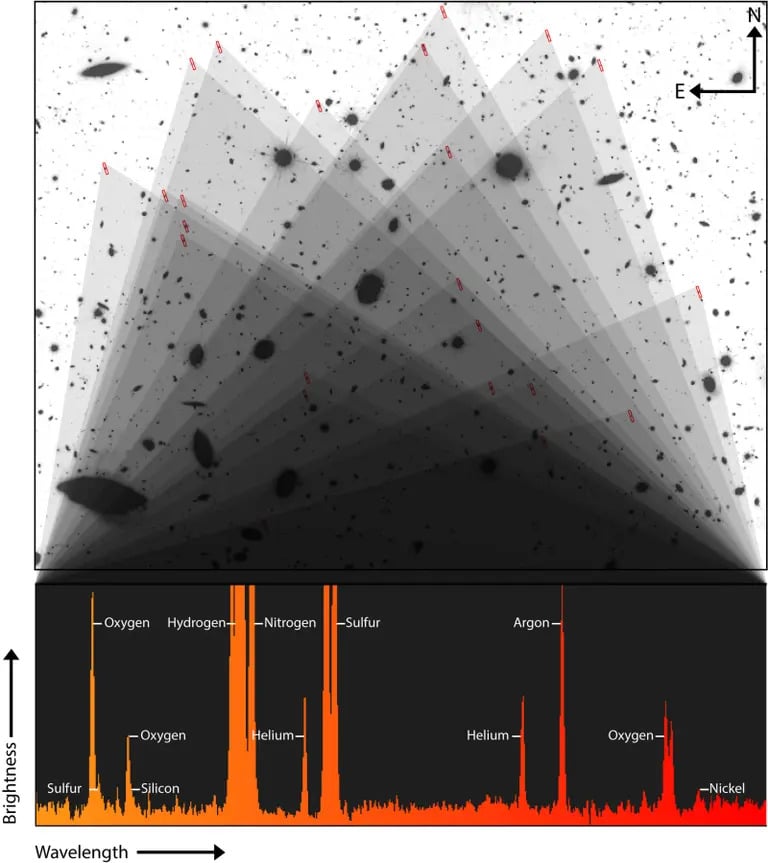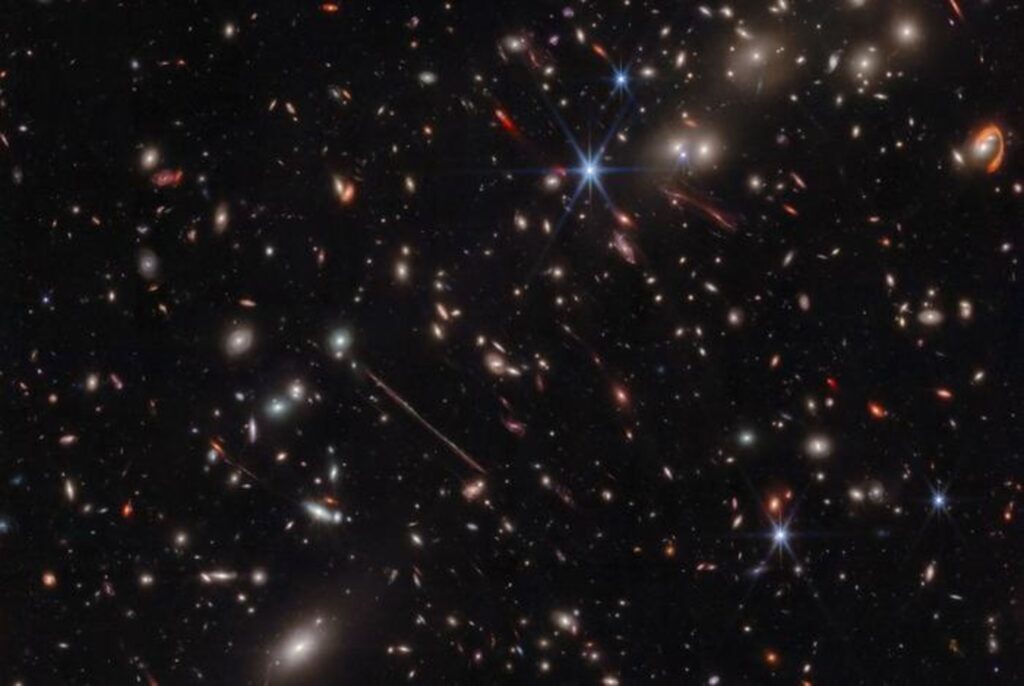It’s a teenage wasteland in outer space. The James Webb Space Telescope has captured a remarkable detailed view of “teenage galaxies” from just 2 to 3 billion years after the Big Bang. These findings, part of the CECILIA (Chemical Evolution Constrained using Ionized Lines in Interstellar Aurorae) survey, provide a unique window into the formation and evolution of early galaxies.
The study centers on “teenage galaxies,” which underwent intense periods of star formation during the universe’s infancy. By studying these ancient celestial objects, scientists hope to unravel the mysteries of how galaxies, including our Milky Way, evolved over billions of years.
“We’re trying to understand how galaxies grew and changed over the 14 billion years of cosmic history,” says study first author Allison Strom, from Northwestern University and a former Carnegie Science postdoc, in a media release. “Using the JWST, our program targets teenage galaxies when they were going through a messy time of growth spurts and change. Teenagers often have experiences that determine their trajectories into adulthood. For galaxies, it’s the same.”
Key takeaways:
- Gwen Rudie and Allison Strom’s study on ancient galaxies revealed they are unusually hot and contain elements like nickel, challenging current understanding of galaxy evolution.
- Utilizing the James Webb Space Telescope (JWST), the team captured detailed views of 33 ancient galaxies, providing new insights into their formation and development.
- The CECILIA survey’s analysis of galaxy spectra identified eight elements, with the unexpected presence of nickel indicating unique stellar characteristics in these galaxies.
- The early galaxies studied were found to be exceptionally hot, exceeding 13,350 degrees Celsius, much hotter than contemporary galaxies.
- The project, named in honor of Cecilia Payne-Gaposchkin, is part of several JWST initiatives led by Carnegie scientists to explore the chemical composition of early galaxies.
The CECILIA team employed the James Webb Space Telescope (JWST) to observe 33 carefully selected ancient galaxies. These galaxies emitted their light more than 10 billion years ago, offering a rare glimpse into the distant past. By analyzing the spectra of this ancient light, scientists can determine temperature and chemical composition, much like a prism disperses sunlight into a spectrum of colors.
“We averaged together the spectra from all 33 galaxies to create the deepest spectrum of a distant galaxy ever seen — which it would take 600 hours of telescope time to replicate,” explains Gwen Rudie from Carnegie Science. “This enabled us to create an atlas, of sorts, that will inform future JWST observations of very distant objects.”

The study’s spectroscopic analysis revealed the presence of eight distinct elements within these ancient galaxies: hydrogen, helium, nitrogen, oxygen, silicon, sulfur, argon, and nickel. While the existence of these elements in galaxies is not surprising, the ability to measure their light with such precision represents a milestone in observational astronomy.
Nickel, in particular, stood out as an unexpected find.
“Never in my wildest dreams did I imagine we would see nickel,” says Strom. “Even in nearby galaxies, people don’t observe this. There has to be enough of an element present in a galaxy and the right conditions to observe it. No one ever talks about observing nickel. Elements have to be glowing in gas in order for us to see them. So, in order for us to see nickel, there may be something unique about the stars within the galaxies.”
This discovery holds significance because elements heavier than hydrogen and helium originate inside stars and are dispersed into space when stars explode in events like supernovae. Thus, detecting these elements in early galaxies offers insights into how star formation has evolved over cosmic time.
The study also revealed that these “teenage” galaxies were exceptionally hot. By analyzing the spectra, physicists calculated the galaxies’ temperatures. While some regions in galaxies can reach temperatures above 9,700 degrees Celsius or 17,492 degrees Fahrenheit, the “teenage” galaxies exceeded 13,350 degrees Celsius or 24,062 degrees Fahrenheit.
“We expected these early galaxies to have very, very different chemistry from our own Milky Way and the galaxies that surround us today,” says Rudie. “But we were still surprised by what JWST revealed.”
The CECILIA project, named in honor of Cecilia Payne-Gaposchkin, a pioneering astrophysicist who revolutionized our understanding of the Sun’s composition, has paved the way for a deeper understanding of the early universe.
“Allison and I recognize that our own work revealing the chemistry of these very early galaxies is built upon her legacy,” says Rudie.
The study is published in the The Astrophysical Journal Letters.












